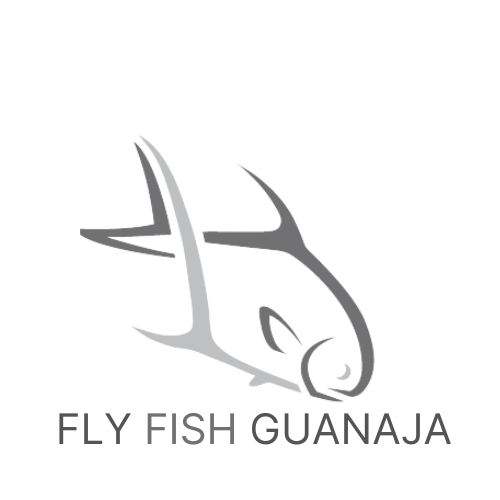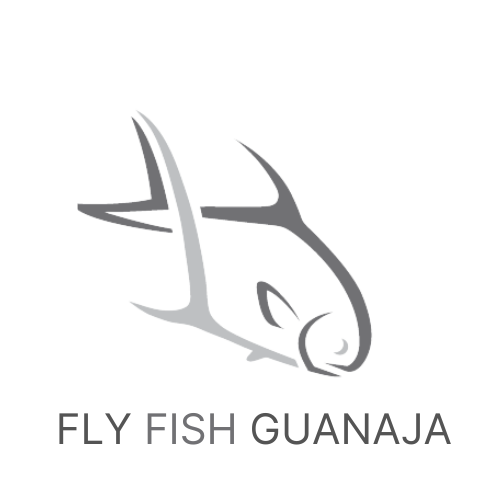Jimmy Carter - Guanaja Bonefish
Rebuilding the mangrove ecosystem of a Honduras flats paradise.
By President Jimmy Carter as seen in Fly Fisherman Magazine
My wife, Rosalynn, and I were in Argentina in October 1998 when Hurricane Mitch struck Central America, and we made an unscheduled stop there on our way home, to help promote international relief efforts. The hurricane hovered over Nicaragua, Guatemala, and Honduras for more than two days, and its 180-mph winds and 75 inches of rain brought unprecedented destruction. The lowlands and seacoast ecosystems were devastated, 19,325 people died, and several thousand others went missing. We always wanted to return to the area to witness the degree of recovery.
More than ten years later, I was fishing with some friends in the Black Canyon of the Gunnison, and was fascinated to learn that our guide Steve Brown offers fishing excursions at Guanaja Island about 50 miles off the northern coast of mainland Honduras, and just 10 miles from Roatan Island.
He said that the flats around the island were alive with bonefish and permit. I quickly recruited Wayne Harpster, Bob Wilson, and Carlton Hicks to join Rosalynn and me, and we made plans to meet there in April 2010.
Our group of fly-fishing friends has fished Alaska, for sea-run brown trout in the Rio Grande in Tierra del Fuego, for dorado in the Iberá Natural Reserve in northern Argentina, for rainbows in the Zhupanova River of the Kamchatka Peninsula, for peacock bass at the junction of the Ventuari and Orinoco rivers in southern Venezuela, and for bonefish in Los Roques, a Venezuelan National Park. In addition, I have bonefished along the barrier reef of Belize, and with Rosalynn in the Bahamas.
We were surprised to find that travel is relatively convenient to both of the isolated Honduran islands. There are direct flights to Roatan weekly from both Atlanta and Houston. From there it's just a short hop to Guanaja in a charter plane.
Guanaja is about ten miles long, five miles wide, and there is good fishing on all sides. We stayed on Jones Cay, one of several small islets strung out along the eastern side, about a mile offshore. Each is set like a jewel within a broad continuous flat, just inside a reef that faces the open sea.
We found luxurious quarters on the southern edge of the small cay, with a large veranda from which we could survey the surrounding flats. On the opposite end of the cay, just 100 yards away, was the landing dock and boathouse, which contained another comfortable apartment. Even before we had a chance to rig our rods, we could see schools of bonefish swimming past our veranda, in water that ranged from ankle deep to a little more than knee deep, depending on the changing tide.
I got up early every morning, and enjoyed a cup of coffee on the veranda while scanning the flats with binoculars. On three occasions I sighted the tails of permit, and Steve Brown abandoned his fly-tying desk to join me as I caught bonefish several days before breakfast just by wading a few yards onto the flat. I also had some early morning shots at permit but was not successful in landing one.
Our normal schedule was to leave the dock each morning at about 8 o'clock, with one or two fly fishers and an equal number of guides in each flat-bottomed boat. We either carried a picnic lunch or returned to Jones Cay for lunch, perhaps rested a few hours, and then fished until almost sundown. During our five days of flats fishing, each of us had opportunities to visit the other eastern cays and also to fish around the western and northern ends of Guanaja. We were at first challenged by strong winds, but there were usually enough fish in sight that Rosalynn and I could wade or maneuver upwind for convenient casting, either wading or from the boat.
I had never fished for permit, but after Steve loaned me his book Fly Fishing for Permit by Jack Samson—which describes Guanaja as having some of the best permit fishing on Earth—I became eager to see this elusive species, and possibly approach near enough for a cast or two. I reached this goal 14 times, but never induced one to take my fly.
On one occasion as the tide was coming in, two large permit hovered excitedly over my fly twice, about 20 feet from me, with their broad tails almost touching each other. My guide whispered repeatedly, "Wait until one takes it." Then both permit spooked when a large wave rolled in, and crashed around them.
With guide John Warren also serving as chef, we enjoyed the most delicious gourmet meals I've ever had on a fishing trip, so it was with some reluctance that we decided to try a couple of the public eating places on nearby Graham's Cay and on the main island, just to become acquainted with some of the natives.
We had a chance to meet the mayor, teachers, pastors, and other local leaders, and learned that there are about 10,000 residents on Guanaja, most of whom live on the densely packed 23-acre Bonacca Cay a few hundred yards off the main island. Two of the small villages are linked by the only road, so nearly all transportation is via water.
About 90 percent of the people are Seventh Day Adventists, a religious group that also operates most of the schools and has ensured that most islanders speak English as a second language. The primary local income is from fishing, but most of the boats were inactive during the time we were there because it was off season for lobsters.
The ravages of Hurricane Mitch are still evident more than a decade later, although most of the homes and stores have been rebuilt. There are numerous boat hulks along the shore, and large forests of the formerly protective mangrove trees were dead.
We were intrigued by the efforts of Scott Duncan and Pamela Cragin, two of our hosts, to restore coastal mangrove forests that were wiped out by Mitch and still haven't fully recovered. They and many other volunteers have planted more than 88,000 propagules saplings that resemble large carrots and are harvested from mature trees.
I helped plant some propagules, which will take root if the sharp ends are simply stuck into the sand or mud about three or four inches deep. Duncan and Cragin's goal is to plant about a half million propagules, and they are looking for financial contributions and volunteers to help with the hard work.
I noticed that we were the only fishermen on the Delta plane, with all the other passengers going to Roatan or Guanaja for scuba diving. For all practical purposes, Guanaja seems to be virgin territory at least for bonefish and permit. We thoroughly enjoyed our visit to Guanaja, one of the most beautiful and secluded fishing spots in this hemisphere.
Mangrove Restoration
Hurricane Mitch (1998) was a Category 5 hurricane that hovered over Guanaja for nearly three days, killing an estimated 95 percent of the mangroves surrounding the island. In normal circumstances, mangroves can and do naturally recover from storm damage. In this case, the high percentage of mangroves destroyed, combined with Guanaja's geographic isolation from other mangrove areas, means that there are few seed trees, and recovery has been painstakingly slow. Without mangroves to trap and hold soil, erosion is causing a reduction in the overall potential mangrove habitat.
Mangroves are unique in their ability to grow in shallow salt water and brackish estuaries. Their extensive root systems and green canopies form nurseries for juvenile fish and other wildlife in tropical and near tropical areas around the world. Mangrove forests were once looked upon as worthless swamps, and in the past 25 years up to 35 percent of the world's mangrove forests have been destroyed by shrimp farms and other seashore development. Now it is well known that mangrove forests are an essential part of shallow salt-water ecosystems, and without them, fish populations suffer.
The Guanaja Mangrove Restoration, a nonprofit project registered with the Ocean Foundation and operated by Americans Scott Duncan and Pamela Cragin, and longtime friend Toby Jacobs, aims to restore the island's mangroves by planting 400,000 red mangrove propagules around the island perimeter.
Propagules are mangrove seedlings that germinate and grow while still attached to the parent plant, then detach into the water where they drift to new habitat. Red mangroves predominate in Guanaja, but the group also plans to plant the two other native species—white and black mangroves. Red mangroves thrive in deeper water and shoreward areas, blacks in shallower, more brackish areas, and white mangroves grow in the shallowest water and even on dry land. There are more than 70 species of mangroves worldwide.
So far, the group has planted about 88,000 propagules and is searching for more funding and more volunteers to continue the work. "We are looking for hardy volunteers who don't mind long hours of hard work in a tropical environment," said Scott Duncan. Volunteers should be able to wade through deep mud, brush, and debris carrying 5-gallon buckets to harvest ripe propagules, and also to transport and plant each propagule by hand. The volunteers work at least four hours each day in the cool morning hours, and often spend the afternoons bonefishing. Guanaja Mangrove Restoration is also looking for financial contributions. For more information, contact fishforchange.org
President Jimmy Carter was awarded the Nobel Peace Prize in 2002. His ongoing efforts with the Carter Center (cartercenter.org) include leading a coalition that has reduced the incidence of Guinea worm disease from an estimated 3.5 million cases in 1986 to fewer than 3,200 today, making it likely to be the first disease since smallpox to be eradicated, and observing 81 elections in 33 countries to help establish and strengthen democracies.





